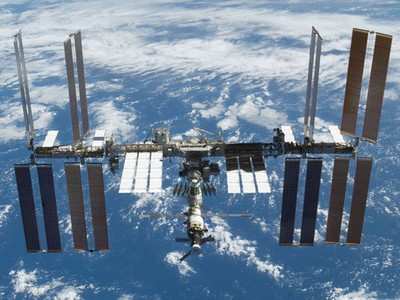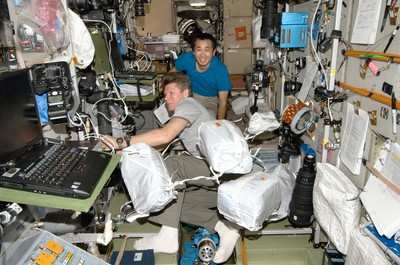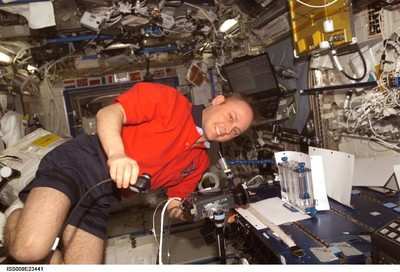International Partners Excited By Potential Of Extended
Mission
 NASA and its international partners are looking forward to
unprecedented scientific opportunities aboard the International
Space Station (ISS). With station assembly nearing completion, the
ISS Partnership is looking forward to using the station to its
fullest capacity. The US administration's fiscal year 2011 budget
proposal calls for continuing station operations to at least 2020,
which will create new opportunities for advancing microgravity
science research.
NASA and its international partners are looking forward to
unprecedented scientific opportunities aboard the International
Space Station (ISS). With station assembly nearing completion, the
ISS Partnership is looking forward to using the station to its
fullest capacity. The US administration's fiscal year 2011 budget
proposal calls for continuing station operations to at least 2020,
which will create new opportunities for advancing microgravity
science research.
"This is a really exciting week for the space station and for
the scientists that want to use these laboratories," said Julie
Robinson, program scientist for the station at NASA's Johnson Space
Center in Houston. "We've already had some important findings on
station during its construction. With this strong support for
continued space station lifetime to 2020 or beyond, we will have
amazing discoveries from the science and technology research that
can be accomplished."
NASA senior managers from the space station program and
counterparts at Russia's Roscosmos, the European Space Agency,
Canadian Space Agency and Japan's Ministry of Education, Culture,
Sports, Science and Technology met to discuss the implications of
continuing station operations and utilization and recently issued a
joint statement about the station's future.

They noted, "ISS continuation could bring great benefit to all
partners and humankind by demonstrating significant and sustained
return on the partnership's investment in the ISS program,
primarily through the enhanced research and usage
opportunities."
The ISS Partnership is scheduled to meet again at the Heads of
Agency level on March 11 in Tokyo to further discuss partner
efforts to undertake their own decisions for space station
extension and the opportunity it will provide to use this unique
platform for scientific, technological, diplomatic and educational
purposes.

The continued use of the station will open the window for more
studies that can only be done in the unique environment of space.
Specifically, scientists can discover how cells reproduce and
differentiate in microgravity with applications to areas such as
tissue generation and wound repair. Also, there are opportunities
for more human physiology research to learn about systems such as
heart, muscle and bone, which can benefit space explorers and ill
or injured patients.
Studies of fluid physics that benefit from lack of buoyancy in
microgravity will provide new understanding of soft matter,
supercritical fluids and two phase flow. Technology tests will
advance areas such as robotics, life support and spacecraft
servicing.
Station construction began in Dec. 1998 and will be completed
during 2010. Once complete, the station will transition to a new
"full usage" phase, where continuous scientific research will be
conducted aboard the multinational orbiting laboratory.

During the past decade, scientific research accomplishments made
aboard the station included advances in the fight against food
poisoning and new methods for delivering medicine to cancer cells.
Studies of salmonella bacteria identified the controlling gene
responsible for its increased virulence in microgravity, and a
commercial company has used changes in virulence of microbes to
screen for candidate vaccines.
Results of an early station experiment led to improvements in a
method for delivering drugs to targets in the human body. The
research led the way for better methods of micro-encapsulation, a
process of forming miniature, liquid-filled balloons the size of
blood cells that can deliver treatment directly to cancer
cells.
 NTSB Final Report: Rutan Long-EZ
NTSB Final Report: Rutan Long-EZ ANN FAQ: Turn On Post Notifications
ANN FAQ: Turn On Post Notifications Classic Aero-TV: ICAS Perspectives - Advice for New Air Show Performers
Classic Aero-TV: ICAS Perspectives - Advice for New Air Show Performers ANN's Daily Aero-Linx (06.28.25)
ANN's Daily Aero-Linx (06.28.25) Aero-News: Quote of the Day (06.28.25)
Aero-News: Quote of the Day (06.28.25)






